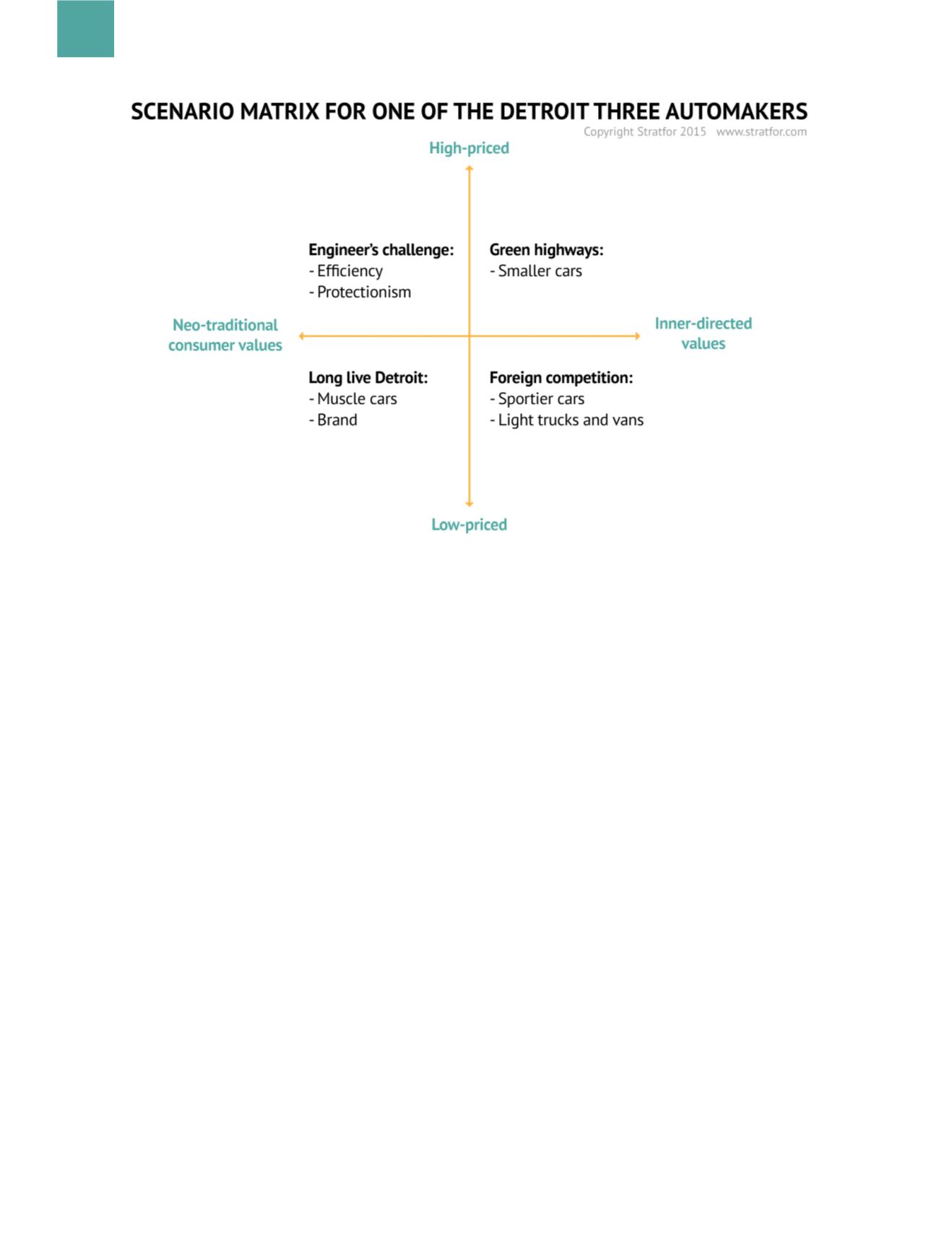
16
HR
West
®
different environments. As a result, the client started
thinking harder about smaller cars, as well as the
minivans and SUVs that would appeal to consumers
with non-traditional values.
I like this case study just because it offers such a
good example of an “official future.” Geopolitical
forecasts can help to formulate the official future.
Scenario planning can then supplement the base
case forecast with other scenarios that will further
illuminate the base case. Their logics have been
chosen based on the scenario team’s collective
judgment regarding what is most important to the
focal issue. It pays to question the most important
assumptions. What if we’re wrong? Scenario
planning guards against the dangers of placing all
of the organization’s eggs into the basket of just
one forecast, however well founded that forecast
may be.
STEP 6: SCENARIOS
The second major task of scenario planning —
actually telling the story of each chosen scenario
— calls for very different talents and skills. A good
scenario is very much a story, but most stories are
written by a single author, not by a committee. How
can a scenario team combine the creativity of many
individuals into just one clear narrative line?
As a matter of tradecraft, a good method for eliciting
specific plot elements is to encourage workshop
participants to write newspaper headlines on post-
it notes. A harvest of such post-it notes will supply
plenty of content for the scenario narrative.
This process can be started in a workshop setting,
but once the members of the scenario team have
generated dozens of plot elements and newspaper
headlines, it can take several weeks, even months,
for a small core team to draft narrative scenarios
from the outlines generated in the workshop.
STEP 7: IMPLICATIONS
AND OPTIONS
Usually a month to two after the first workshop,
a second workshop will be held to figure out the
implications of each scenario and the strategic
options appropriate to those implications. Take one
scenario and use it as the playing field on which our
plays must be planned. Play out each scenario to its
conclusion. Then stand back and look at the lists of
strategic options appropriate to each scenario. Pull
out those that show up on all or most lists. These
are the “no brainers,” the strategic options that
look good in any and all scenarios. Start work on
them immediately.
The options that look good in every scenario
are often associated with what are called pre-
determined elements — aspects of the future that
can be reliably predicted. And here is the realm
where Stratfor’s geopolitical analysis aligns most
closely with scenario planning. Whatever can be
predicted should be predicted. For the unpredictable
remainder, the critical uncertainties, scenarios will
capture the alternatives in coherent bundles.
Demography is one of the most reliable sources of
predetermined elements. And note how significantly
demographics play in Stratfor’s forecasts for, say,
Russia, where the population is declining, or Japan,
the world’s front-runner in aging population.
STEP 8: EARLY INDICATORS
Early indicators are the first signs of the big changes
that differentiate one scenario from another.
Sometimes early indicators are found in the behavior
of the most innovative consumers, sometimes in the
small stories deep within a newspaper. Sometimes
early indicators take the form of new journals or
publications indicating the rising popularity of some
new technology. Other times a few words in the
speech of an important politician will signal some
new legislation.
Scenario Planning


